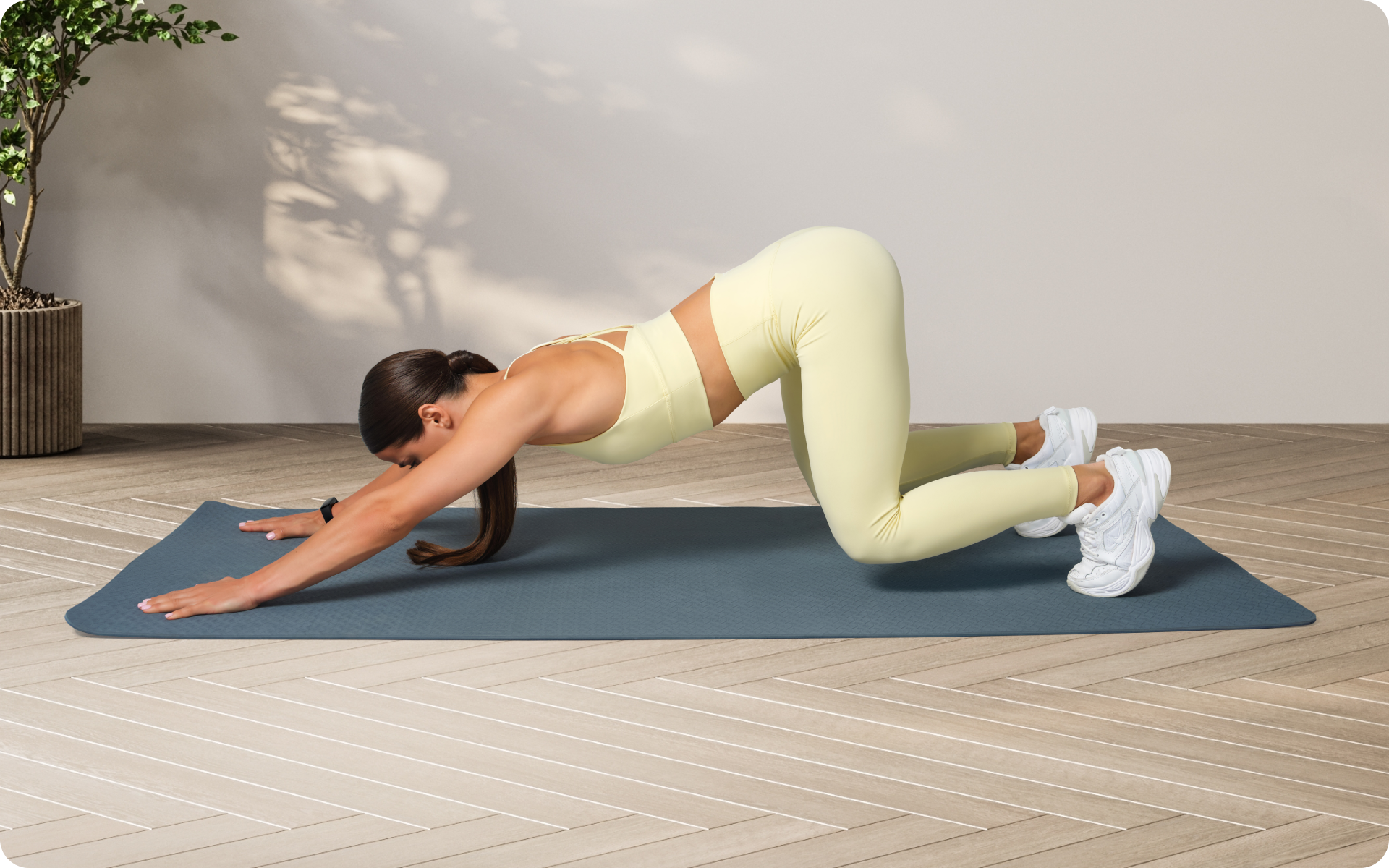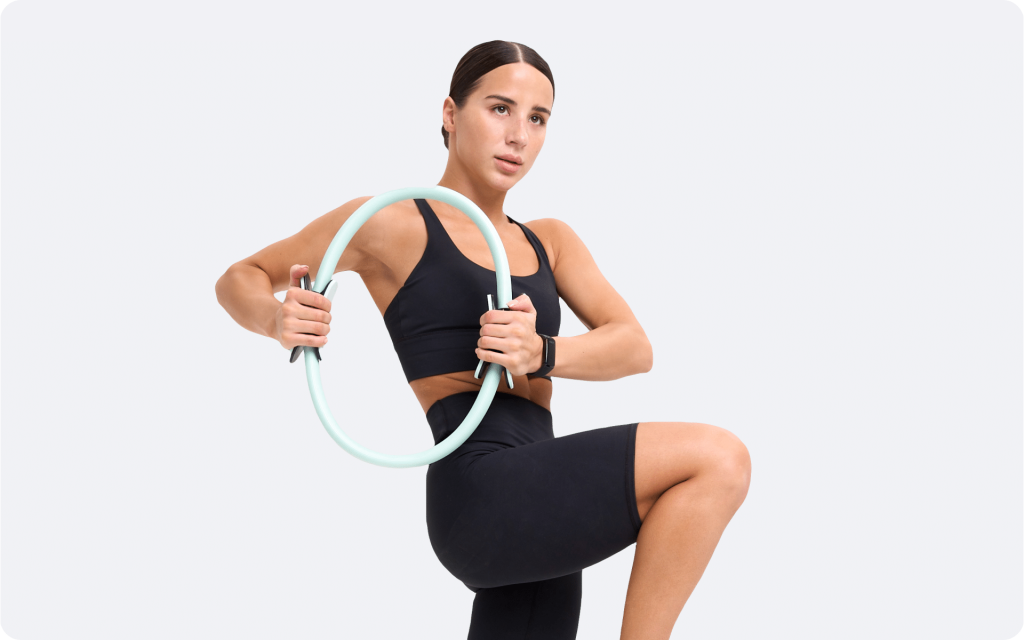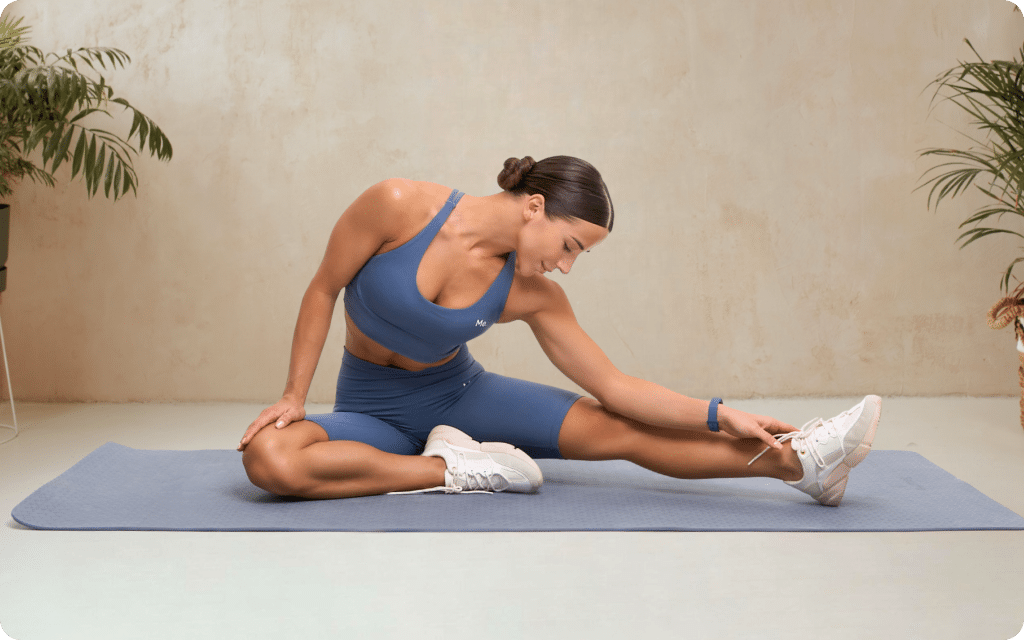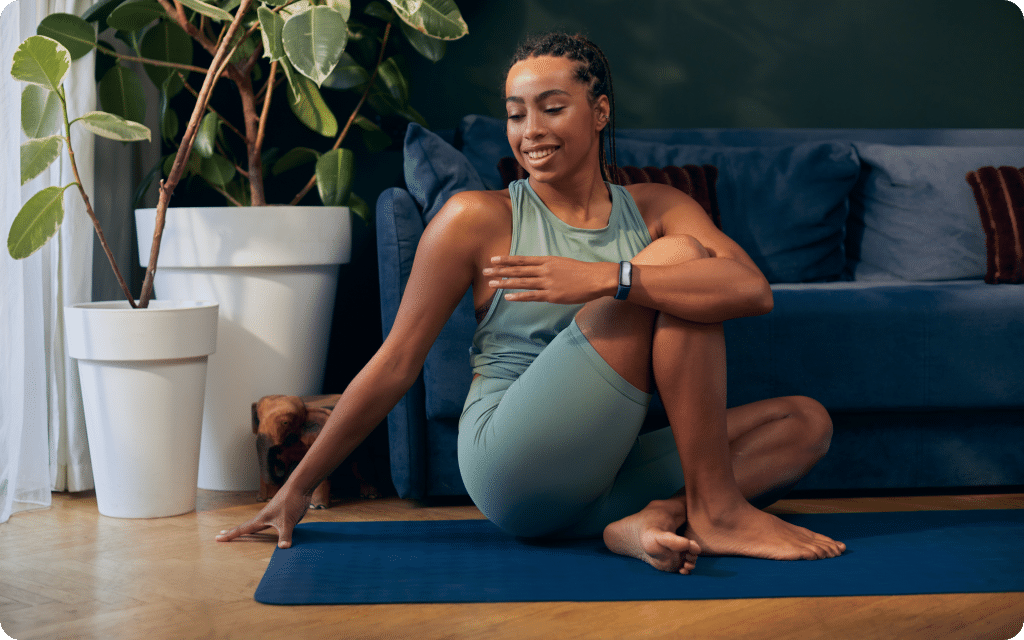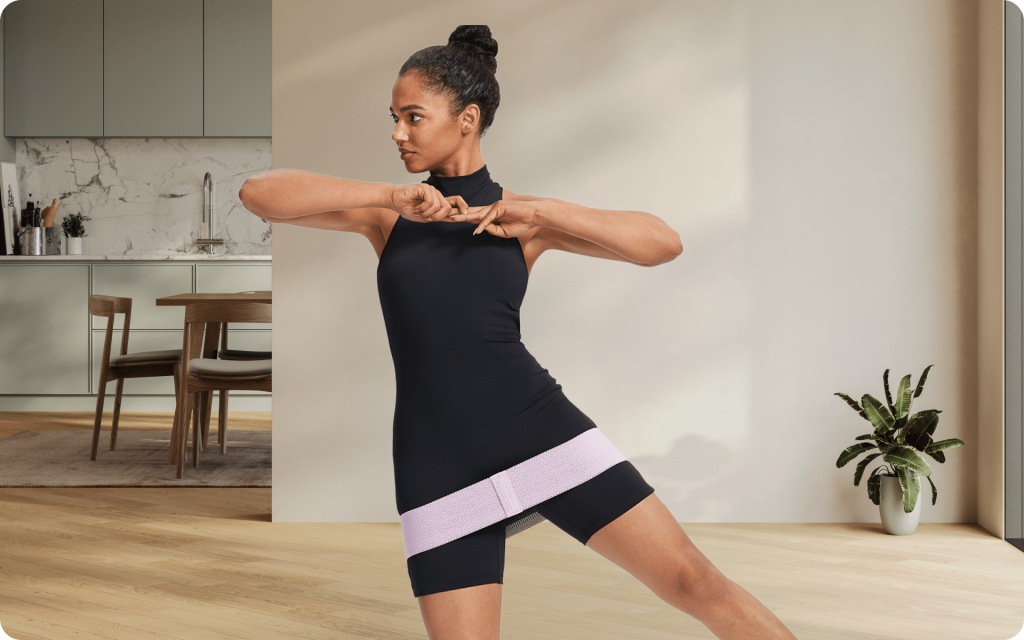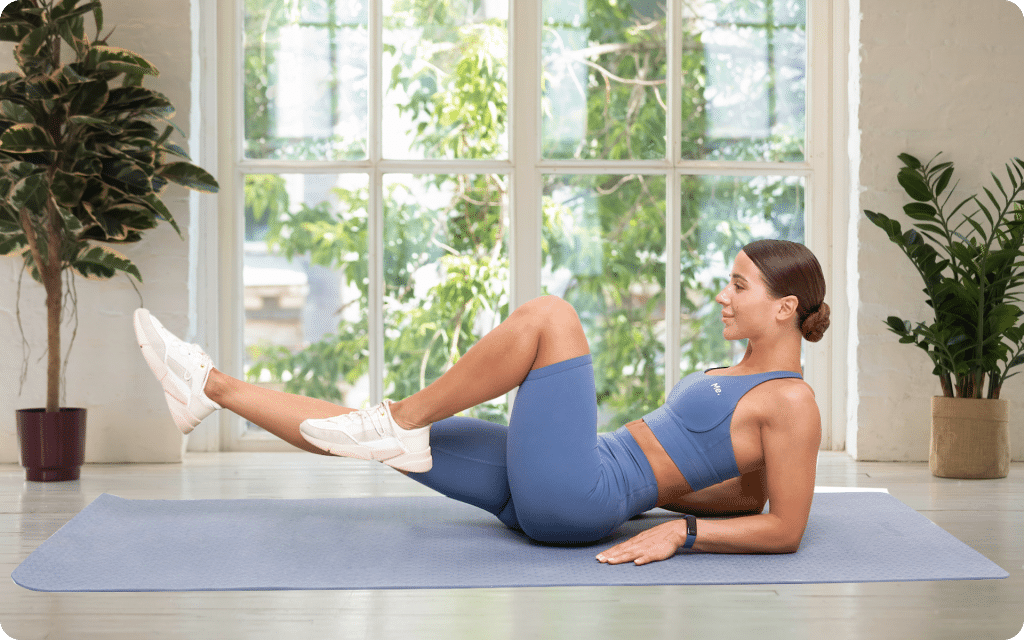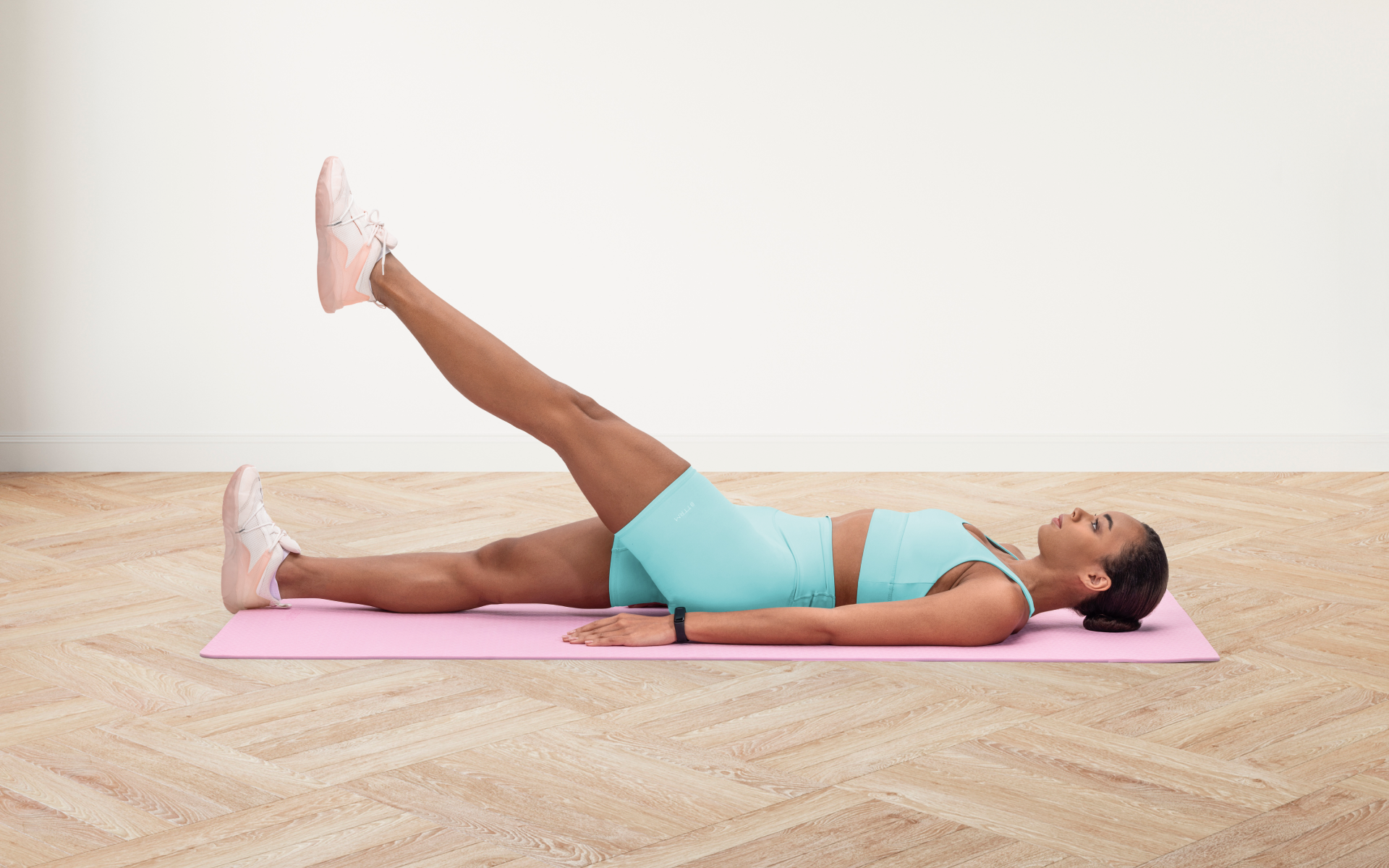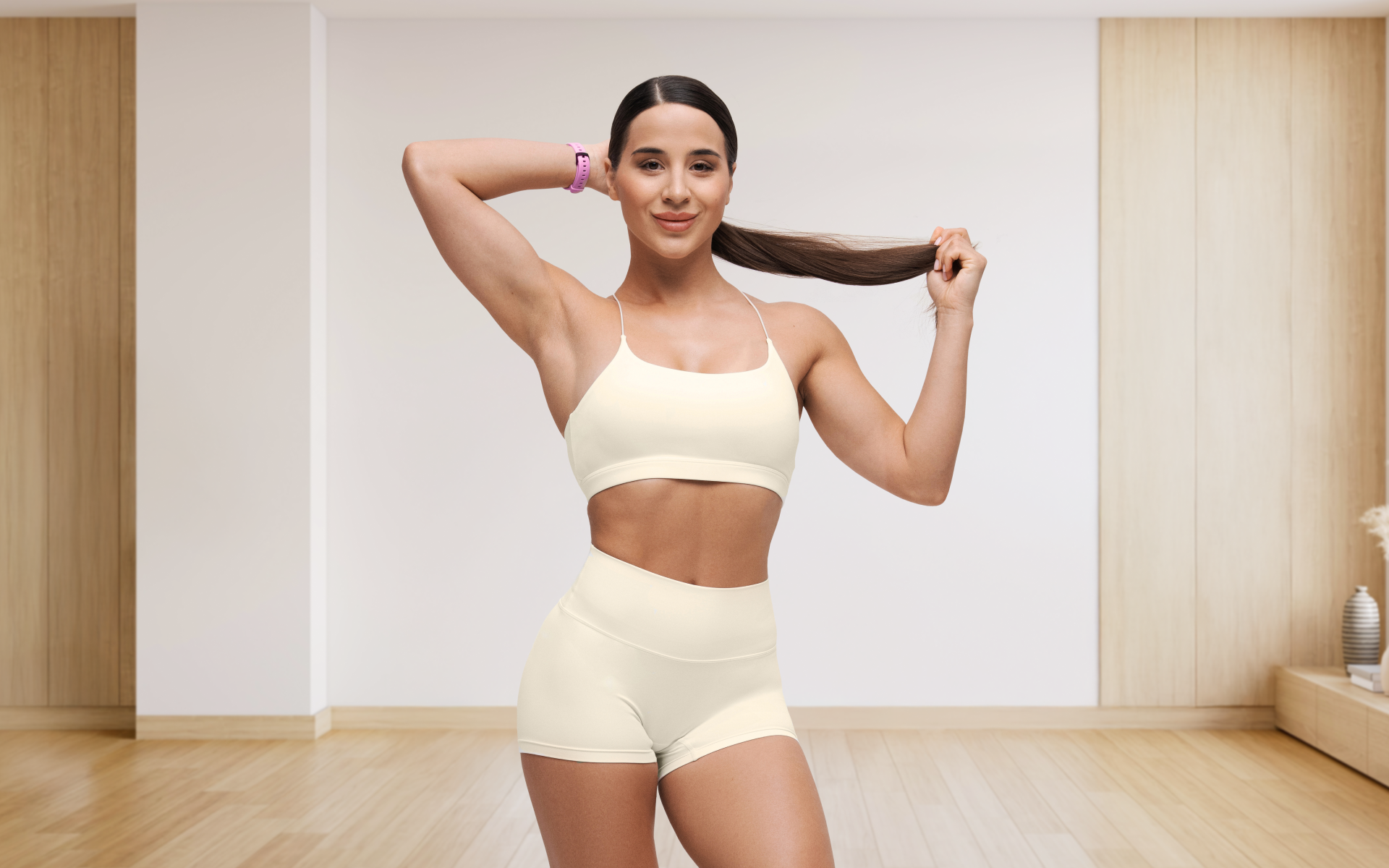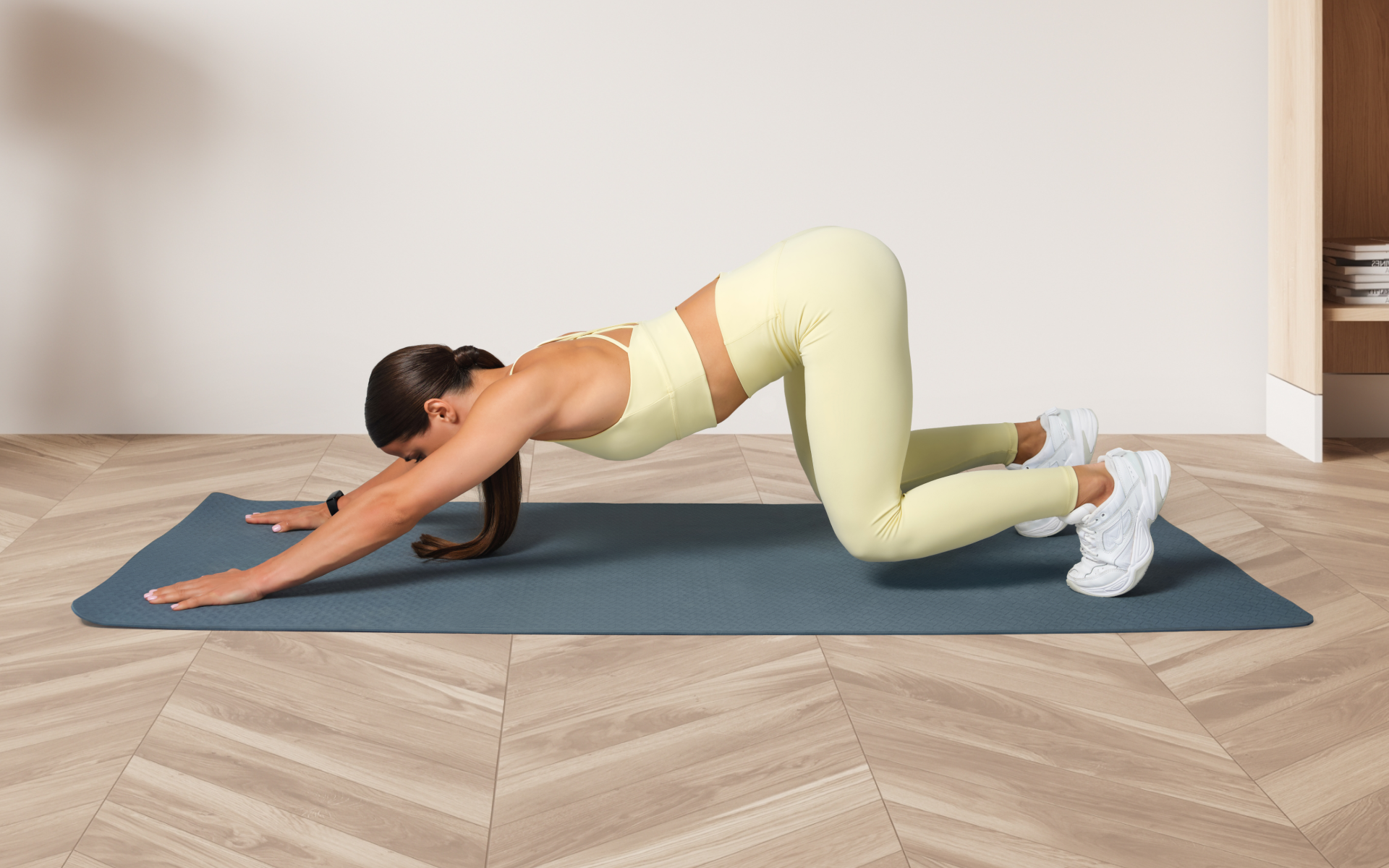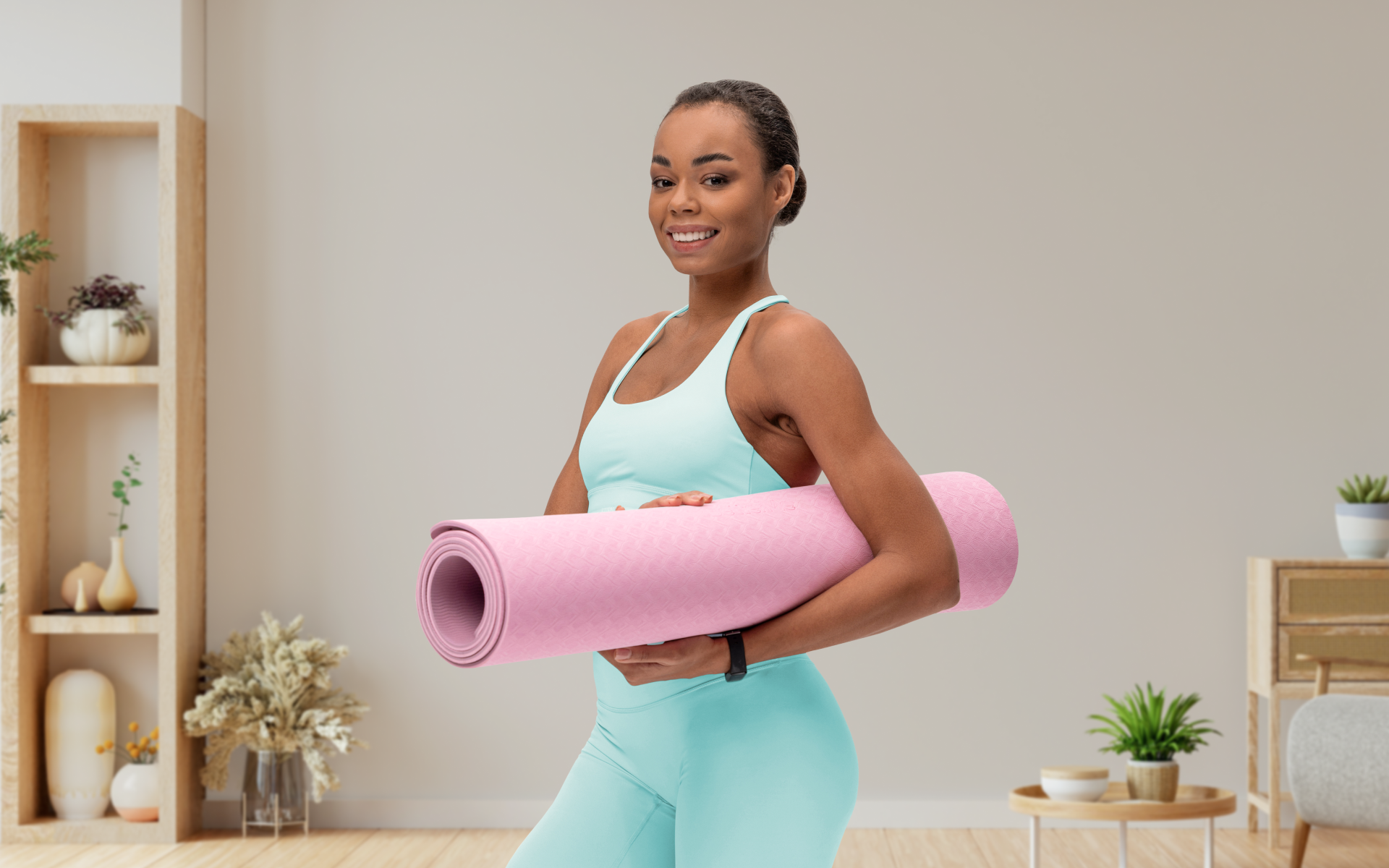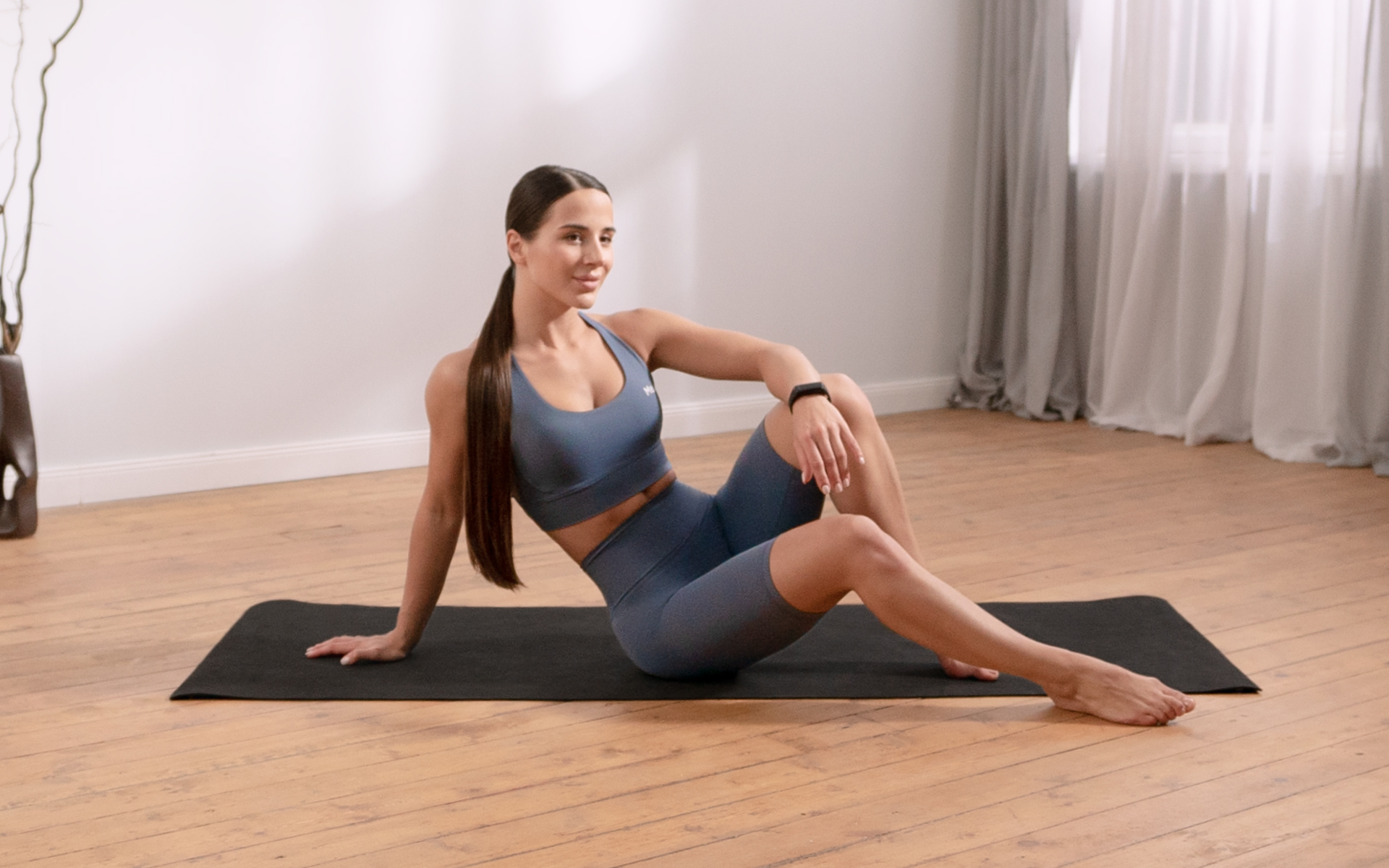According to The New York Times, Pilates is one of the most popular workouts of 2025. While social media may have made the workout all about aesthetics, scientific research has shown that this workout offers incredible benefits to the body and mind.
Before you get swept up in the Pilates craze and start looking for a studio or at-home workouts, we must stress the importance of a Pilates warm-up routine. Excited as you are to start your workout routine, you mustn’t jump headfirst without prepping your body with some Pilates warm-up stretches.
Read on for facts on the importance of stretching for Pilates, as well as a list of Pilates warm-up exercises to do before beginning your session.
What Is a Pilates Warm-Up and Why Is It Important?
A Pilates warm-up routine is a sequence of largely dynamic warm-up exercises that help prepare your body and your mind for the upcoming workout session.
According to scientific research, Pilates helps improve abdominal strength and upper-spine posture, and also with improving pain management, increasing flexibility, strength, and mobility, and improving respiratory rate, vital capacity, body mass index, balance, and much more (1, 2).
In order to get these benefits, you need to do your exercises correctly and consistently and take care of your body before, during, and after the workout routine to avoid injury. A warm-up session will help with the ‘before’ part of this.
Studies on the benefits and importance of warm-ups have shown that taking 5 to 10 minutes to do full-body warm-up exercises before your main workout helps prepare your muscles and mind for the upcoming workouts by (3, 4, 5):
- Improving blood flow and oxygen to the muscles
- Increasing your heart rate
- Reducing the risk of injuries
- Increasing your performance by up to 79%
A Pilates warm-up for beginners or even advanced practitioners helps prepare their bodies and minds for the main workout session by increasing blood and oxygen flow throughout the body and muscles, and helps prevent injuries.
Read more: What Does a Female Pilates Body Look Like?
How to Prepare Your Body for Pilates
Here are some things to do to get ready for your first Pilates class:
- Eat and Hydrate
Eat a light meal about an hour or two before your Pilates session. This will help you to not exercise while hungry, which may cause lightheadedness, or while too full, which can make you sluggish or nauseated. Proper hydration before a workout also helps keep your muscles and joints lubricated, which can optimize your performance.
- Dress Appropriately
Pilates clothing needs to be close-fitting, i.e., it should hug your body without being constricting or restrictive. Close-fitting clothes allow you or your instructor to clearly see your form, which ensures that you’re doing the moves with proper form. This helps prevent injury.
It should also be noted that as a workout, Pilates involves a lot of stretching movements, so you need clothes that allow you to move and stretch freely in them – avoid ties, zips, and belts if you can, as they may get in the way.
BetterMe: Health Coaching app helps you achieve your body goals with ease and efficiency by helping to choose proper meal plans and effective workouts. Start using our app and you will see good results in a short time.
- Warm Up
Some sources may say that a warm-up is optional, but we insist that it is essential. As demonstrated in the above section, a warm-up helps both your body and mind engage better in the workout, which optimizes your performance. If you work out at a studio, always arrive early so you can join the warm-up session. If you do the exercises at home, always set aside 5 to 10 minutes for some quick Pilates warm-up exercises before the main event.
- Tie Up Your Hair and Avoid Accessories
If you have long hair, it’s best to have it up in a high bun to avoid getting it in your face. Accessories may get stuck on clothing or on the machinery, so leave them in a safe place and put them on once the class is over.
Once your workout is done, drink a high-protein post-workout recovery shake to help replenish and build your muscles.
Are You Supposed to Warm Up Before Pilates?
Yes, you are. Regardless of the exercise they are performing, most people usually treat warming up as an afterthought. This is a bad idea as it will likely decrease your performance for your workout. When you’re not performing at your best, you drastically increase your risk of injury.
Poor performance in Pilates is not only very costly – Pilates classes, especially in a studio, are rather expensive – but may also lead to you not seeing the aforementioned benefits of the workout despite being consistent with your routine. An injury could set you back even further, so ensuring that you properly warm up your body for Pilates is essential.
How to Warm Up for Pilates Correctly
You need a good routine to help you properly prep your body before Pilates. Dynamic stretches – those that move a joint and muscle through their full, active range of motion in a controlled, rhythmic way – are the best for a warm-up session of any workout routine. Clinical research on dynamic stretching has shown that, as part of a warm-up, it helps (6):
- Increase flexibility
- Reduce the risk of muscle stiffness
- Optimize performance during the workout
Dynamic stretching has also been shown to be effective for muscle activation and better pain management, which can be beneficial for anyone who is using Pilates as a form of injury recovery method (7).
What Is a Good Pilates Warm-Up Plan?
A good Pilates warm-up plan is one that improves blood and oxygen flow and increases your heart rate before the main exercise session begins. You can do your Pilates warm-up while seated on a mat or while standing. Here’s a simple list of warm-up exercises for each option:
Exercises for Pilates Warm-Up While Standing
- Spinal rotation – Stand with your feet hip-width apart. Extend your arms forward or bend them at the elbows, then rotate your torso to one side. Pause, then return to the center. Do the same on the other side.
- Arm circles
- Calf raises
- Hip circles
- Leg swings – Hold onto a wall for balance and gently swing one leg forward and back, then side to side. Do this 20 times for each leg.
- March or jog in place
Whether you’re a workout beast or just a beginner making your first foray into the world of fitness and dieting – BetterMe has a lot to offer to both newbies and experts! Install the app and experience the versatility first-hand!
Exercises for Pilates Warm-Up on a Mat
- Pelvic curls – Lie on the mat on your back with your knees bent and your feet flat, hip-width apart. On an exhale, tilt your pelvis, flattening your lower back, and curling your spine up until your body forms a straight line from your shoulders to your knees. Hold briefly before slowly lowering back down, one vertebra at a time, to the starting position.
- Cat-cow – Start on your hands and knees with your hands under your shoulders and your knees under your hips. On an inhale, drop your belly, arch your back, and lift your head to look up. Pause. On an exhale, round your spine up toward the ceiling, tucking your chin toward your chest, and drawing your navel in.
- Seated ankle circles
- Torso twists – Sit on the mat with your legs extended straight out in front of you and your toes pointed up. Raise your left leg, bend it at the knee, and cross it over your right leg – your left foot should be on the outside of your right knee, flat on the ground. With a straight back, twist your torso to the left from your lower back. Hold this position before returning to the center, then switching legs and twisting to the other side. Keep alternating sides.
- Arm and wrist circles.
Read more: Is Pilates Good for Core Strength? The Science-Backed Answer
How Long Should a Pilates Warm-Up Be?
The rule of thumb is the longer your workout, the longer the warm-up session, and vice versa. While there’s no stipulated time limit for how long any warm-up session should be, it ‘s generally accepted that you should allow at least 5 to 10 minutes to warm up before you exercise (8).
However, one study has stated that pushing your warm-up time to 15 minutes could be optimal for enhanced technical performance and physiological readiness while avoiding unnecessary fatigue (9). Another has stated that warming up for 20 to 45 minutes could be best for more intense sessions such as swimming competitions (10).
Not necessarily, as it depends on an individual and the type of Pilates or yoga class that you participate in. No, you shouldn’t. In fact, it’s best not to engage in any form of exercise on an empty stomach. Food fuels your workouts, and without said fuel, you may risk poor performance, dizziness, and nausea due to a lack of energy. Always try to eat something at least an hour before your workout. Yes, it does. All forms of physical activity burn calories and when the body is burning more calories than it’s consuming, it will lose body fat. While Pilates may not burn as many calories as more intense exercises such as high-impact cardio or strength training, it does still burn calories and can lead to fat and weight loss when it is paired with a healthy diet in a calorie deficit. Yes, you should drink water during Pilates, so make sure you always have some bottled water with you to help you stay hydrated while exercising.Frequently Asked Questions
Is Pilates harder than yoga?
Should you do Pilates on an empty stomach?
Does Pilates burn fat?
Do you drink water during Pilates?
The Bottom Line
If you want to optimize your performance, reduce your likelihood of injury, and increase the benefits of exercise, then a Pilates warm-up should be part of your workout routine. Just 5 to 10 minutes can make a world of difference in how well you perform during your workout session and also help you decrease your injury risk for your session. In addition, it’s important to note that you should always make time for a cool-down session after your workout. As with warm-ups, cool-downs are also important and shouldn’t be overlooked.
DISCLAIMER:
This article is intended for general informational purposes only and does not serve to address individual circumstances. It is not a substitute for professional advice or help and should not be relied on for making any kind of decision-making. Any action taken as a direct or indirect result of the information in this article is entirely at your own risk and is your sole responsibility.
BetterMe, its content staff, and its medical advisors accept no responsibility for inaccuracies, errors, misstatements, inconsistencies, or omissions and specifically disclaim any liability, loss or risk, personal, professional or otherwise, which may be incurred as a consequence, directly or indirectly, of the use and/or application of any content.
You should always seek the advice of your physician or other qualified health provider with any questions you may have regarding a medical condition or your specific situation. Never disregard professional medical advice or delay seeking it because of BetterMe content. If you suspect or think you may have a medical emergency, call your doctor.
SOURCES:
- Pilates: how does it work and who needs it? (2011, pmc.ncbi.nlm.nih.gov)
- Effects of Pilates on health and well-being of women: a systematic review (2023, bfpt.springeropen.com)
- Effects of warming-up on physical performance: a systematic review with meta-analysis (2010, pubmed.ncbi.nlm.nih.gov)
- BENEFITS OF WARMING UP IN SPORTS – AN ANALYTICAL STUDY (2018, ijcrt.org)
- Revisiting the ‘Whys’ and ‘Hows’ of the Warm-Up: Are We Asking the Right Questions? (2023, pmc.ncbi.nlm.nih.gov)
- Dynamic Stretching Has Sustained Effects on Range of Motion and Passive Stiffness of the Hamstring Muscles (2019, pmc.ncbi.nlm.nih.gov)
- Dynamic stretching improves muscle activation and pain pressure threshold but not isometric hand strength when compared to static stretching (2023, efsupit.ro)
- Warm Up, Cool Down (2024, heart.org)
- Acute effects of different warm-up duration on internal load and external load responses of soccer players in small sided games (2025, pmc.ncbi.nlm.nih.gov)
- Influence of duration and intensity of warm-up sessions on the performance among short distance swimmers (2012, researchgate.net)
